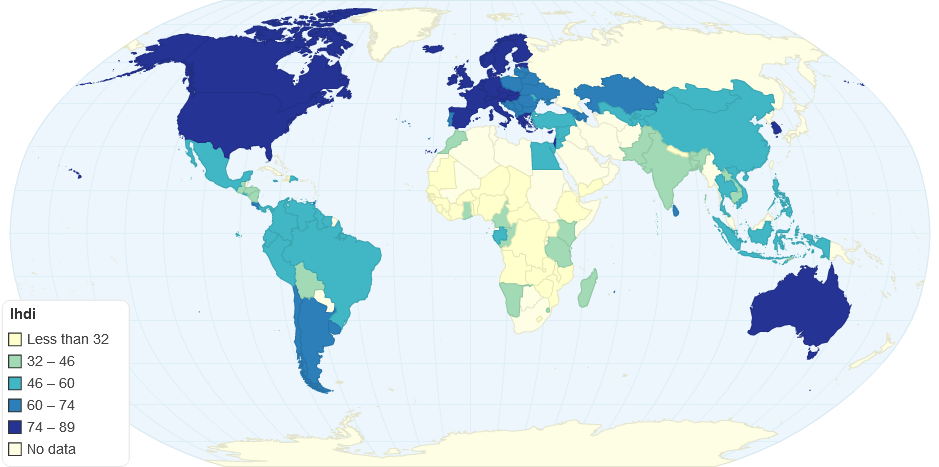Adjusting the HDI for inequalities
In 2010, the Inequality-adjusted HDI (IHDI) was introduced. The IHDI is the HDI adjusted for inequalities in the distribution of achievements in each of the three dimensions of the HDI (health, education and income). The IHDI will be equal to the HDI value when there is no inequality, but falls below the HDI value as inequality rises. The difference between the HDI and the IHDI represents the ‘loss’ in potential human development due to inequality and can be expressed as a percentage. In 2012 the IHDI was calculated for 132 countries and the results are telling. For example, United States suffers a loss of more than 12% when its HDI value is adjusted for inequalities and moves 13 places down in rank.
12 years ago

